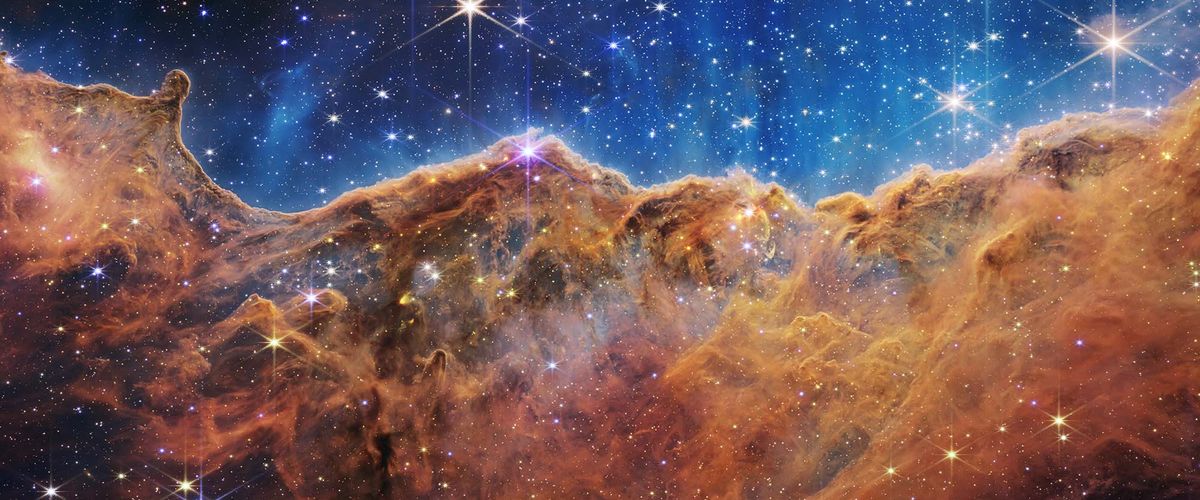Eight ways the BU community is advancing space exploration
Posted July 2022
On July 20, 1969, Neil Armstrong landed on the moon and recited the famous words many of us have quoted: “One small step for man, one giant leap for mankind.” That day, the Apollo 11 mission marked an unforgettable milestone in space exploration for the US and beyond. Over 50 years later, the celestial discovery continues. From tracing the origins of stars to capturing stunning images of planets, scientists are continuing to uncover incredible truths about our galaxy.
In honor of the historic lunar landing, here are eight ways that the Terrier community is advancing the field of space exploration.
1. NASA sent a Terrier into space
Terriers are known to reside all across the globe, but this alumnus went just a little bit further. Earlier this year, Astronaut Robert Hines (ENG’97) was a part of the SpaceX Crew-4 team that successfully made its way to the International Space Station. This Wednesday, July 20, 2022, Hines will be going live from space for a special Q&A. Click here to view the Livestream at 12 pm ET on July 20.
2. NASA’s telescope reveals the clearest images ever observed, opening up new research opportunities for BU astronomers
Gone are the days of blurry space images. With the help of the James Webb Space Telescope, NASA recently unveiled the clearest images of stars and nebula clouds that humans have ever seen. Elizabeth Blanton, a CAS associate professor of astronomy, discusses this historic and captivating view of space and the potential paths of exploration for BU astronomers.
3. BU professor helps capture the first photo of a black hole
A first for the Earth, and for our galaxy—scientists have finally captured an image of a black hole. Known as Sagittarius A*, the black hole exists at the center of the Milky Way, and required a team of over 300 scientists (including one from BU) to snap a photo. Learn more about the breakthrough.
4. BU astronomers analyzed light data from a piece of supernova shrapnel
Traveling at a speed of almost two million miles an hour, this star is catapulting itself toward the edge of the Milky Way—but why is it on its way out? Learn what BU scientists have discovered about this bright phenomenon.
5. NASA gives a major grant to BU-led effort
A BU-led team at the SHIELD DRIVE Science Center has been awarded a NASA grant for their work on addressing cutting-edge science questions. The Terrier-lead team hopes to continue their innovative work to help explain the physical mechanisms behind the heliosphere. Read the full article on BU Today.
6. Images of Jupiter help BU scientists understand more about the origins of the solar system
As the largest planet in our solar system with more than 75 moons, Jupiter has always stood out for its uniquely massive qualities. However, NASA’s recent Juno Mission revealed just how impressive Jupiter truly is with these stunning, up-close images. The beneficiaries of the incredibly detailed photographs are scientists, like Marissa Vogt, who came to BU in 2014 as a postdoc and is now a senior research scientist in the BU Center for Space Physics.
7. BU astronomers develop a new way to measure & detect the presence of planet-forming disks around young stars
BU astronomers are seeking out young stars in galactic clouds and foggy regions of space dust to learn how planet formation occurs. Their work on protoplanetary disks is helping to answer questions about the origin and evolution of stellar objects within different magnetic fields. Learn more about their impressive discoveries.
8. A BU-made telescope will be sent to the moon in 2023
The NASA Artemis program is gearing up to send humans back to the moon in 2024—but before that, Artemis scientists will send up some preliminary science projects. One of those projects is LEXI, The Lunar Environment Heliospheric X-ray Imager. LEXI is being built by a team of BU engineers led by Brian Walsh, assistant professor of mechanical engineering. Once on the moon, LEXI will take first-of-its-kind X-ray images of the earth’s Magnetosphere.

